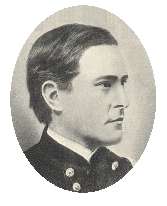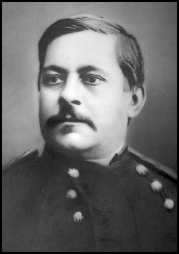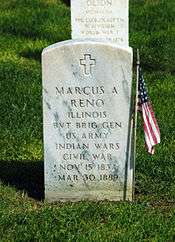Marcus Reno
| Marcus Albert Reno | |
|---|---|
 Marcus A. Reno | |
| Born |
November 15, 1834 Carrollton, Illinois |
| Died |
March 30, 1889 (aged 54) Washington, D.C. |
| Allegiance |
United States of America Union |
| Service/branch |
United States Army Union Army |
| Years of service | 1857–1880 |
| Rank |
|
| Battles/wars |
Indian Wars American Civil War |
Marcus Albert Reno (November 15, 1834 – March 30, 1889) was a career military officer in the American Civil War and in the Great Sioux War against the Lakota (Sioux) and Northern Cheyenne, where he served under George Armstrong Custer. Reno is most noted for his prominent role in the Battle of the Little Bighorn, which has ever since been the subject of controversy regarding his command decisions in the course of one of the most infamous defeats in the history of the United States military.
Early life and career
Reno was born November 14, 1834, in Carrollton, Illinois, the fourth child of James and Charlotte Reno. According to one biographer, he was a descendant of Phillippe Francois Renault, who in 1777 accompanied Lafayette to America and was awarded a land grant by the U. S. (worth about $400 million by Reno's time). At the age of 15, he wrote to the Secretary of War to learn about the qualifications necessary to enter the United States Military Academy at West Point, New York. He was admitted and attended West Point from 1851 until 1857, requiring two extra years due to excessive demerits.[1] Reno graduated 20th in a class of 38. He was brevetted second lieutenant, 1st Dragoons, on July 1, 1857, and assigned to duty in the Pacific Northwest in Oregon.
Reno served in the Union Army in the Civil War, leading as a captain in the U.S. 1st Cavalry Regiment at the Battle of Antietam. Reno was injured at Kelly's Ford in Virginia on March 17, 1863, when his horse was shot and fell on him, causing a hernia. He was given the brevet rank of major for gallant and meritorious conduct. Four months later, he served during the Gettysburg Campaign. That same year, he married Mary Hannah Ross of Harrisburg, who would bear him one son, Robert Ross Reno. They owned a farm near New Cumberland, Pennsylvania, in Cumberland County. When she died in 1874, Reno was in the field in Montana. He rode all night to Fort Benton to request leave to attend her funeral, but his request was denied.
Reno participated in the 1864 battles of Cold Harbor, Trevilian Station, and Cedar Creek. After serving in a variety of staff positions, he was brevetted lieutenant colonel in October. In December, Reno became brevet colonel of the 12th Pennsylvania Cavalry, later commanding a brigade against John Mosby's guerrillas. On March 13, 1865, he was brevetted brigadier general for "meritorious services during the war."
In 1866 Reno was ordered to Fort Vancouver, in the Pacific Northwest. He served as acting assistant inspector general of the Department of the Columbia. While there, he became a member of the Freemasons at Washington Lodge #4. He was initiated on July 6, 1867, made a Fellowcraft mason on August 3 and raised to sublime degree of Master Mason on August 21, 1867, at Vancouver.
Reno was promoted to major and in December 1868, joined the 7th Cavalry at Fort Hays, Kansas. Later, he was transferred to Fort Abraham Lincoln, in the Dakota Territory, where he accompanied Lt. Col. George A. Custer on his Sioux campaign in 1876.
The Battle of the Little Bighorn
Reno was the highest-ranking officer serving under Custer at the Battle of the Little Bighorn in June 1876. Reno, with three troops, or companies, was to attack the Indian village from the south, while Custer with five companies intended to cross the Little Bighorn River farther north and come into the village from the opposite side; Custer ordered Captain Frederick Benteen with three companies to move below the Sioux camp to block the Indians from escaping to the south. Captain Thomas McDougall's troop was to bring the packtrain with ammunition and supplies. Historians believe they did not understand how large the village was. The closest estimate we have is thousands of lodges, containing approximately 7,000 warriors and 10,000 women, children, and others too old to fight.
The plan quickly fell apart when Northern Cheyenne and Lakota warriors, rather than fleeing as the cavalrymen expected, poured out of the village to meet Reno's attack. Reno ordered his troops to dismount and form a skirmish line, but that was quickly outflanked by hundreds of Indians, and Reno fell back into the timber along the river. Bloody Knife, perhaps the foremost of the Arikara scouts attached to the 7th Cavalry, was shot through the head as he stood next to Reno. Most of the other scouts slipped away and escaped.
After ordering his troops to mount, dismount then remount their horses, Reno led a hasty scramble across the river and up the bluffs on the other side. There the cavalrymen set up a defensive position on what is now called Reno Hill. By this time 40 of Reno's 140 men already had been killed, 7 were wounded and an undetermined number had been left behind in the timber (although some of these abandoned men would manage to rejoin Reno). No witness at the court of inquiry testified to the mount/dismount/mount canard. Twenty people testified that he was cool under fire and showed no signs of confusion or difficulty.[2]
Benteen soon arrived at Reno's position with his three companies, and McDougall's company came along with the supply train shortly afterward. Sporadic fire continued to be directed at the hill, but heavier gunfire heard toward the Indian village made it clear Custer was engaged in a raging battle. It is still hotly debated why Reno and Benteen did not press forward and attempt to join forces with Custer. Captain Thomas Weir, commander of D Troop under Benteen, led his men to the high bluffs now called Weir Point, where observation of the battlefield showed a cloud of dust with Indian warriors present in large numbers. Captain Benteen and other troops also headed towards Weir's position but then when the warriors, having destroyed Custer's command, returned to confront them, all the cavalry retreated back to Reno's original position on the bluffs, still not knowing what happened to Custer.
The warriors took up the high ground above Reno Hill and poured down constant fire on the exposed soldiers until dark. The firing resumed at dawn and continued until late in the afternoon, when the soldiers saw the distant village being broken up and the tribes moving south. The next morning, the 27th, the surviving troops moved closer to the river, where General Alfred Terry and Colonel John Gibbon and their forces found them. Thirteen of Reno's soldiers were awarded the Medal of Honor for their bravery in the battle.
Postbellum career

After the Battle of the Little Bighorn, Reno was assigned the command of Fort Abercrombie where, in December 1876, he was charged with making unwanted advances toward the wife of another officer of the 7th Cavalry, Captain James Bell, while Bell was away from the fort. An Episcopal priest, the Rev. Richard Wainwright, was staying with the Bells, and became concerned enough about Reno's behavior to persuade Capt. Bell to file charges against Reno for immoral conduct.
What really happened is unknown, but Reno certainly displayed public drunkenness on several occasions and denied Rev. Wainwright permission to preach at the fort. Captain Bell had been on detached service during the debacle at the Little Bighorn, which many blamed on Reno. Complaints of public indecency were filed with the commander of the Seventh, Colonel Samuel D. Sturgis, who forwarded the complaints, but dismissed any fault of Reno's (Most of the incidents had occurred at parties or on holidays when other officers also had been drinking). Reno was ordered to surrender command and report to a board of inquiry at St. Paul. The Army board recommended dismissal, but President Rutherford B. Hayes commuted this to suspension from rank and pay for two years.
Responding to charges of cowardice and drunkenness at the Little Bighorn, Reno later demanded and was granted a Court of Inquiry. This inquiry is typically referred to by the acronym RCOI. The court convened in Chicago in January 1879, and called as witnesses most of the surviving officers who had been in the fight. Enlisted men later stated they had been coerced into giving a positive report to both Reno and Benteen. The court reporter later contacted General Nelson Miles, then head of the Army (starting in 1895), wrote that the entire inquiry was a whitewash. While the court did not sustain any of the charges against Reno, neither did it single him out for praise. Later, in public requests for the trial transcripts, pages were missing and the text was found to have been written in the hands of two different people instead of one recording secretary. See the following footnote for a complete scanned transcript of the investigation.[3]
In 1880, Reno was court-martialled a second time for conduct unbecoming an officer because of his drinking. He was supported by his commanders at Ft. Meade, SD, but nevertheless was convicted and dismissed from the service. This time the accusation concerned peeking through the window at the daughter of Samuel Sturgis, his commanding officer. Reno moved to Washington D.C., where he was hired by the Bureau of Pensions as an examiner. He married a government clerk named Isabella Ray in January 1884, but she left him after a few months. When his son was married in Nashville to a whiskey heiress, Reno wrote that he was too busy to attend the wedding. In reality, he could not afford the train fare. Reno offered to write his memoirs, but the New York Weekly Press rejected the offer. When he submitted the portion of his diary concerning the Battle of the Little Bighorn, it was returned unpublished (it was later published posthumously).
Death, subsequent events and 1960s reburial

Marcus Reno died in Washington at the age of 54 on March 29, 1889, following surgery for cancer of the tongue.
Fifty years after what was then known as Custer's Last Stand, Custer's widow Elizabeth Bacon Custer spoke out against a memorial to Reno at the site. She had long campaigned in her husband's memory. Writing in 1926 when she was in her 80s, she stated "I long for a memorial to our heroes on the battlefield of the Little Big Horn [sic] but not to single out for honor, the one coward of the regiment."[4]
In 1967 at the request of Charles Reno, the Major's great-nephew, a US military review board reviewed the original documents and testimony of Reno's 1880 court martial. It reversed the decision, ruling Reno's dismissal from the service improper. His "general discharge" status was changed to "honorable".
Major Reno was originally buried in an unmarked grave in Washington, D.C.'s Glenwood Cemetery.[5] On September 9, 1967, his remains were reinterred with honors (including a church ceremony in Billings, Montana and an eleven-gun salute at his gravesite) in the Custer National Cemetery, on the Little Bighorn battlefield. Reno was the only participant of the Little Bighorn battle to be buried with such honors at the cemetery named for his former commander.[6]
Portrayals in films and television
Reno was portrayed by actor Ty Hardin in the 1967 film Custer of the West, and by Michael Medeirios in the 1991 television mini-series Son of the Morning Star.
Liam Sullivan portrayed Reno, with Barry Atwater as Custer, in the 1960 episode, "Gold, Glory, and Custer - Prelude" of the ABC/Warner Brothers western television series, Cheyenne, with Clint Walker in the title role of Cheyenne Bodie.[7]
See also
References
- ↑ Connell, Evan S. (1984). Son Of The Morning Star. San Francisco, California: North Point Press. p. 40. ISBN 0-86547-160-6.
- ↑ http://www.historynet.com/misrepresented-monster-major-marcus-reno.htm
- ↑ Complete transcript of the Reno Court of Inquiry
- ↑ Connell, Evan S. (1984). Son Of The Morning Star. San Francisco, California: North Point Press. p. 47. ISBN 0-86547-160-6.
- ↑ Reno, Ottie W. Reno and Apsaalooka Survive Custer. New York: Cornwall Books, 1997, p. 31.
- ↑ Connell, Evan S. (1984). Son Of The Morning Star. San Francisco, California: North Point Press. pp. 47–48. ISBN 0-86547-160-6.
- ↑ "Gold, Glory and Custer - Prelude". Internet Movie Data Base. January 4, 1960. Retrieved September 18, 2014.
Further reading
- Ambrose, Stephen E. Crazy Horse and Custer, 1996.
- Barnett, Louise (1996). Touched By Fire. Henry Holt & Company. ISBN 0-8050-3720-9.
- Connell, Evan S. Son of the Morning Star, 1984.
- Hutton, Paul Andrew The Custer Reader, 1992.
- Lehman, Tim. "Bloodshed at Little Big Horn," 2010.
External links
- Complete transcript of the Reno Court of Inquiry
- "Marcus Reno". Find a Grave. Retrieved 2008-02-12.
- Little Big Horn Associates